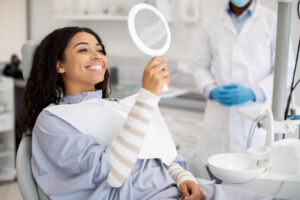BOTOX QUESTIONS ANSWERED
A few blogs prior I had remarked that we have added Botox and dermal fillers as a new part of the practice. I am really enjoying the ability to modify facial features and allowing patient to have rejuvenation of their appearance. I thought I would take the next several articles to discuss the actual materials and procedures. First I will address Botox and then the dermal fillers.
Botox (Botulinum toxin type A) injections have been used for wrinkle treatment over 15 years in the cosmetic industry as a popular treatment for facial wrinkles. Indeed, it has become the most popular procedure, in the world, with 10 million North Americans treated last year, alone.
Botox is derived from the bacteria Clostridium botulinum. It is a highly refined purified protein. There are absolutely no live bacteria in the Botox injection.it is extremely safe and can be used under the skin to act as a muscle relaxant.
How does it work?
Botox is used to treat frown lines and creases by injecting small amounts into the facial muscles. Normally, nerve cells release chemicals which cause the muscles to tighten, leading to frown lines. Botox blocks these chemical signals causing a slight weakening of the muscle contraction and a smoothing of the skin’s appearance. Contrary to popular belief, skillfully applied Botox does not paralyze the facial muscles completely, it just relaxes and reduces their response.
What can Botox do for me?
Botox treatment can reduce the appearance of frown lines, forehead wrinkles and crows feet around the eyes. It can also be used to treat creases around the mouth. When performed properly it should have a gentle relaxing effect while still allowing natural expressions like smiling and frowning. Botox treatment will not reduce lines caused by sun damage and may not be fully effective on very deep creases.
Is it safe?
A course of Botox injections is a well established and recognized treatment that is considered to be safe when carried out by a qualified practitioner. There are, however, some groups of people who should not use Botox. These include pregnant and breastfeeding women and anyone suffering from a disease that affects the nerves or muscles. Certain medicines can react with Botox and you should consult your doctor if you are taking antibiotics or drugs to control heartbeat irregularities, Alzheimer’s disease or myasthenia gravis (a chronic autoimmune disorder). If you are known to be allergic to any of the ingredients in Botox or if the area to be treated is infected, you should not have the treatment.
However, even in experienced hands, every medication, including Botox, has side effects.
The most common side effects are weakening of some muscles unwontedly. For example, some people get an eyelid droop when Botox is put into the brow. Fortunately, Botox side effects are rare and reversible.


